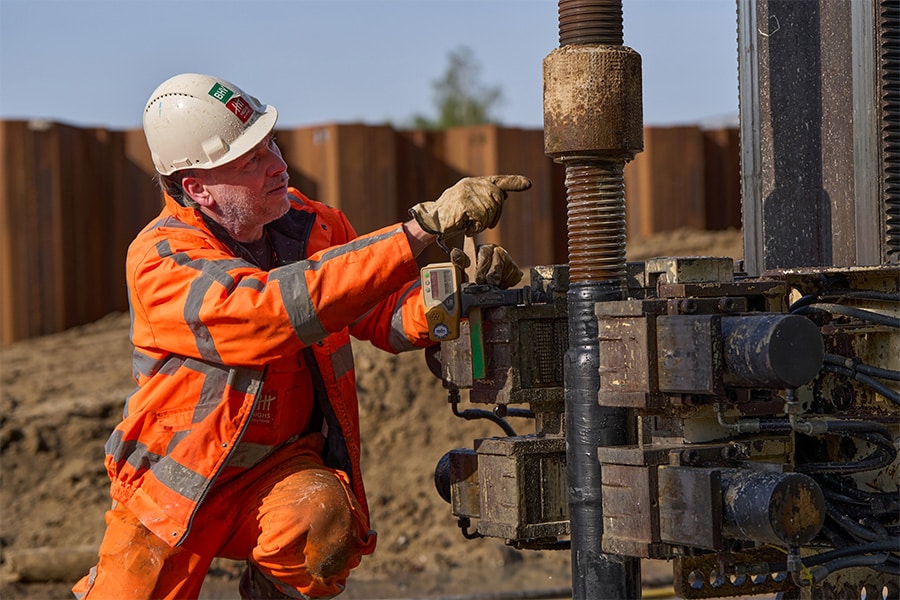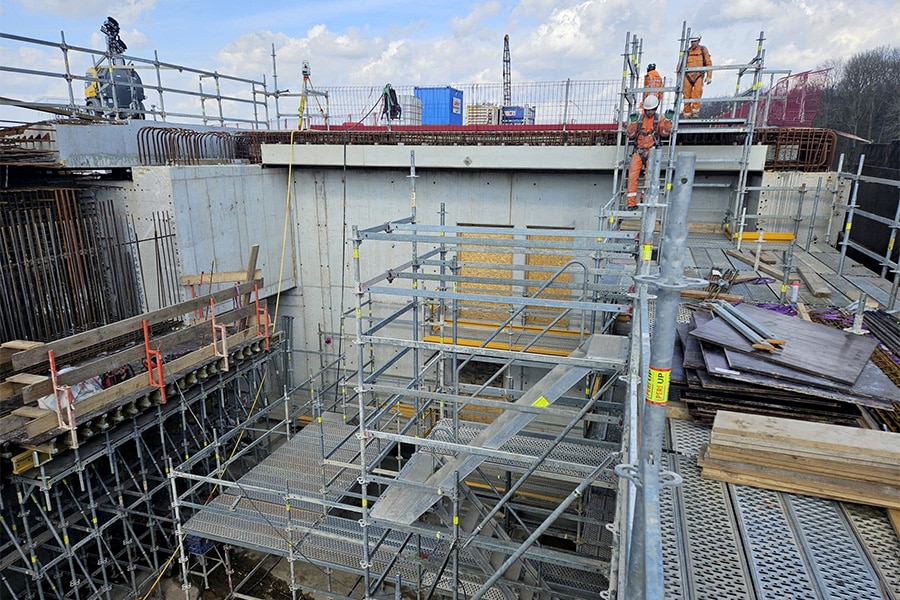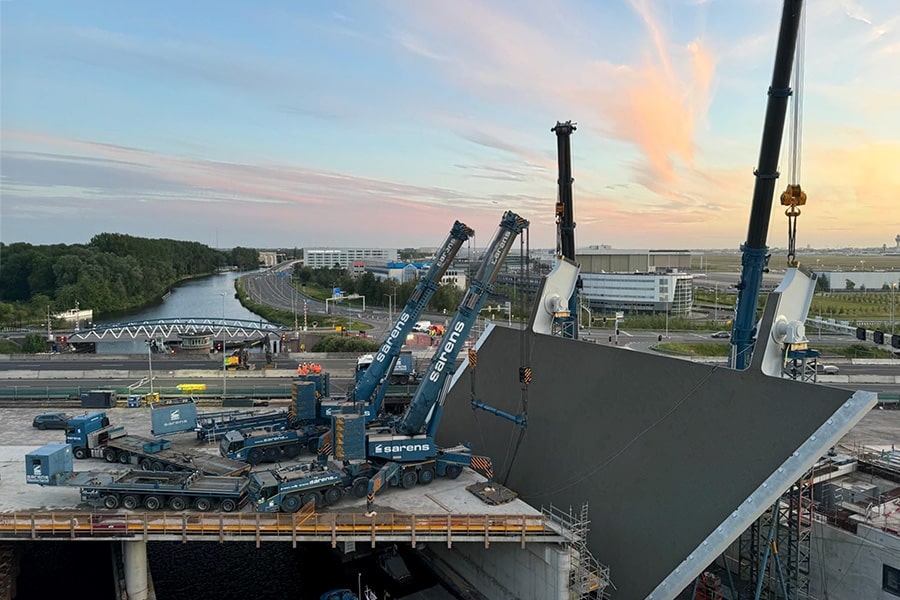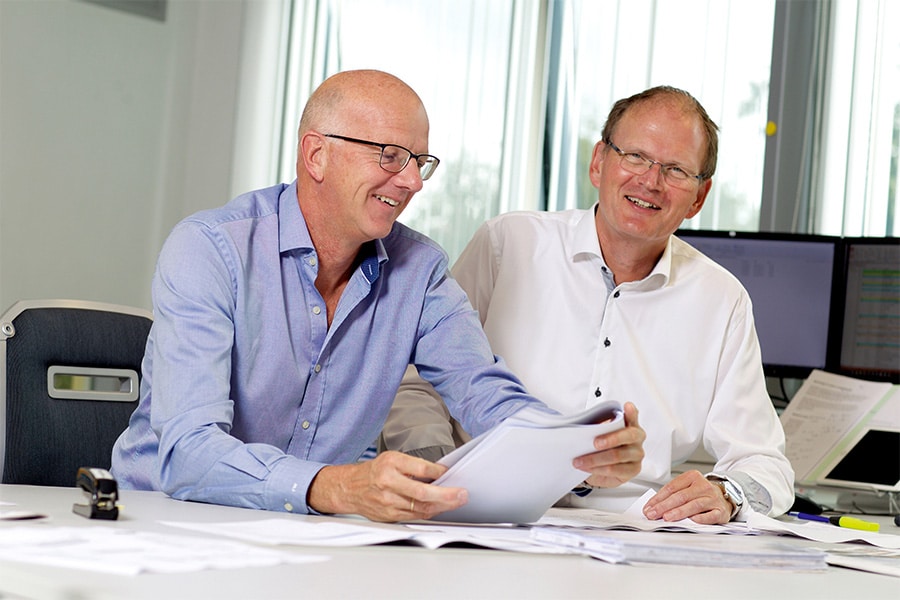
Construction pit excavated to 10.1 meters minus NAP in the wet
The station area in Groningen is undergoing a major metamorphosis. There will be more tracks, platforms and also tunnels for pedestrians, cyclists and buses. A new underground bicycle storage facility is also being built. In two phases, Bonneveld has realized and drained an enormous construction pit for main contractor Strukton Civiel. A review with project leader Stefan Albers.
Bonneveld is a specialist in the realization of wet building pits. "If required, we take care of the complete picture, from excavation, gravel application, culvert work and the underwater concrete pour to the clean and dry delivery of the pit," says Stefan. "With Groningen Spoorzone, we have been involved in that capacity from the tender phase. The construction pit is realized in two phases. The first phase in 2021, after which train traffic was converted over that new cofferdam, and then the second part was realized this year. In total, we completed 75,000 m3 excavated soil, cleaned 1,200 GEWI anchors and poured over 7,000 m3 of underwater concrete."
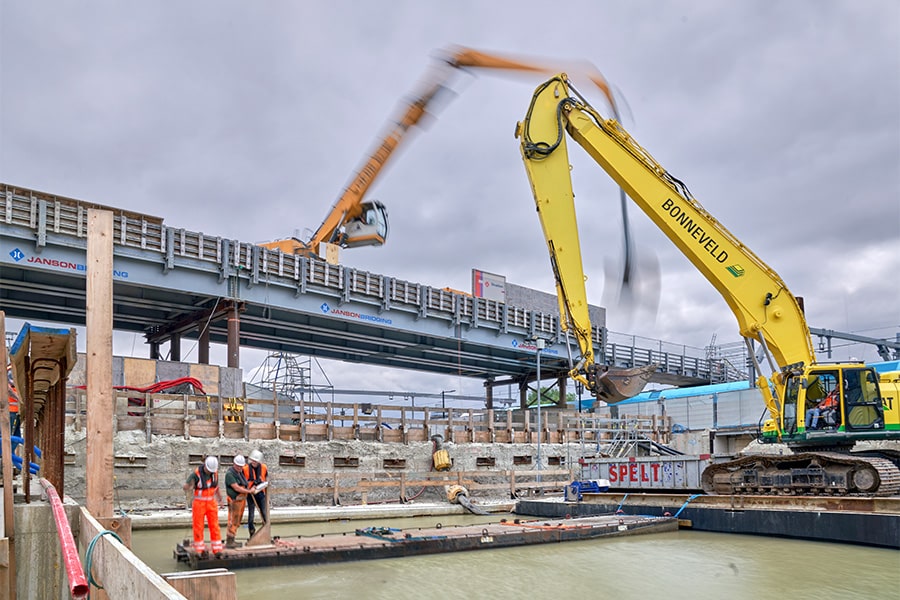
Digging and sucking
The construction pit is a total of 66 meters wide, 130 meters long and 12 meters deep which amounts to 10.1 meters below sea level. "We approached both phases in almost exactly the same way," says Erik Rigter, Bonneveld's executor. "For example, we excavated the first section dry. Then the construction pit was flooded with water from the canal and we started excavating in the wet from a pontoon. In the first phase with two 50-ton crawler cranes, in the second phase with one crawler crane because of the smaller dimensions of the pit. Using the cranes, we were able to excavate the tub to about 8 meters below sea level. Below that are harder clay and loam layers, a typical foundation for Groningen. We hosed down the lower layers to the final depth of 10.1 meters below sea level and then sucked up the soil/water mixture with our DOP pumps and transported it to a dewatering depot 400 meters away. Here, too, a 50-ton crane from Bonneveld was set up to empty the depot."
Complete picture
The disposal of the released soil was not in Bonneveld's scope this time. "Our client chose to carry this out in-house and put it in on another project," Stefan explains. "We did take care of all other matters, including the diving work, the pouring of the underwater concrete floor and the clean delivery of the cofferdam. That is also our strength, we can offer the complete picture." After the first phase, Strukton started construction work in the cofferdam so that train traffic could be diverted across the cofferdam. Bonneveld was thus able to excavate the second phase, located exactly between the train tracks. The tub could only be reached via an auxiliary bridge. "The accessibility was therefore quite a challenge, both for the transport and for the emplacements for the concrete pumps, but in the end that too worked out fine and neatly on schedule. Thanks also to the very pleasant cooperation with Strukton Civiel."
